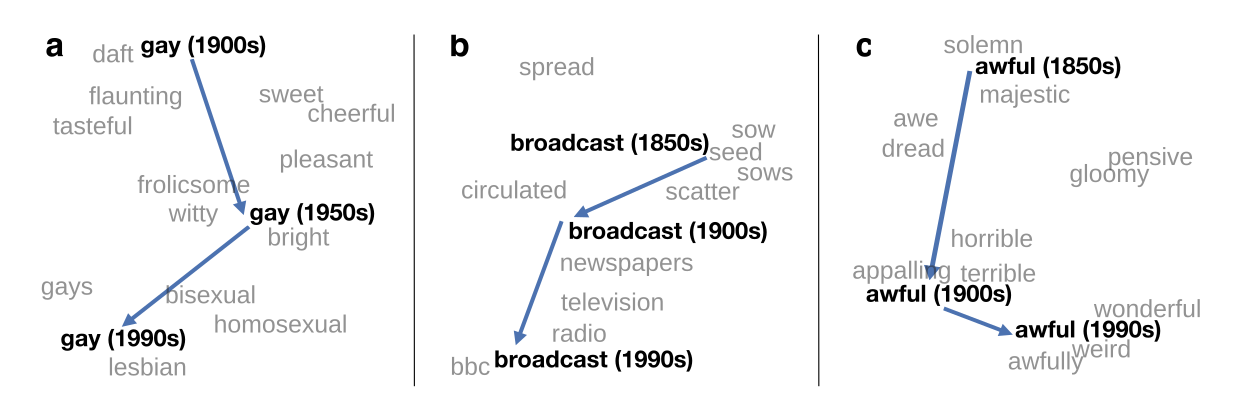This is a really interesting field right now. Hamilton et al have a nice paper that shows how to track changes using procrustean transformations: as the grad students in my DH class will tell you with some dismay, the web site is all humanists really need to get the gist.
 |
| Semantic shifts from Hamilton, Leskovec, and Jurafsky |
I think these plots are really fascinating and potentially useful for researchers. Just like Google Ngrams lets you see how a word changed in frequency, these let you see how a word changed in *context*. That can be useful in all the ways that Ngrams is, without necessarily needing a quantitative, operationalized research question. I'm working on building this into my R package for building and exploring word2vec models: here, for example, is a visualization of how the use of the word "empire" changes across five time chunks in the words spoken on the floor of the British parliament (i.e., the Hansard Corpus). This seems to me to be a potentially interesting way of exploring a large corpus like this.






